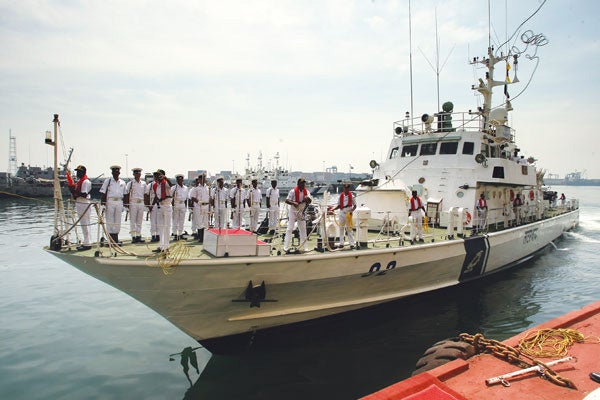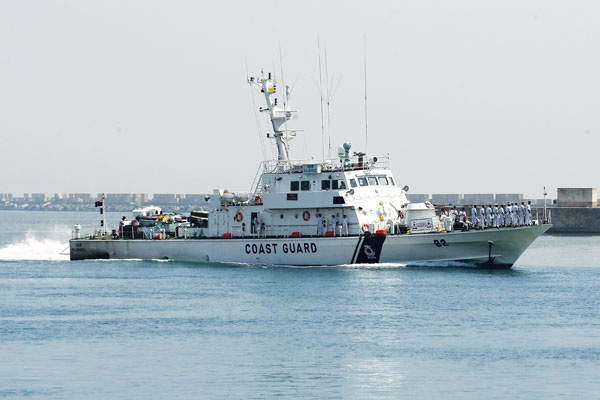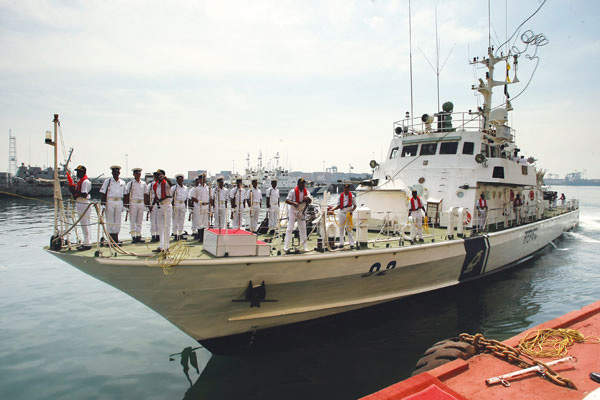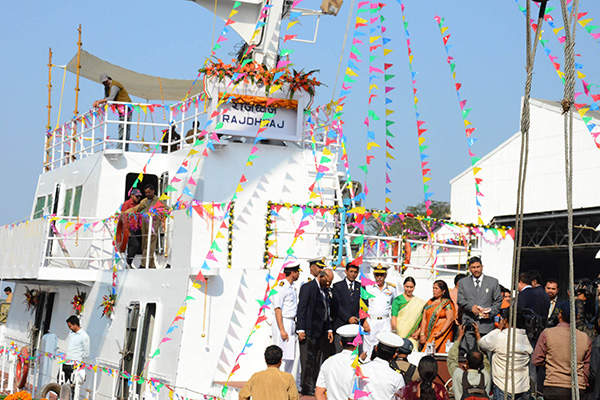
The Rajshree Class Inshore Patrol Vessels (IPVs) are in service with the Indian Coast Guard. Eight IPVs have been indigenously built by Garden Reach Shipbuilders & Engineers (GRSE) shipyard in Kolkata between 2010 and 2013.
The Rajshree Class IPVs are deployed in Exclusive Economic Zone (EEZ) surveillance, coastal security, maritime search-and-rescue (SAR), environmental protection, and fisheries monitoring and protection. The vessels can conduct operations in shallow waters during day and night.
The keel for the first IPV in class, ICGS Rajshree (82), was laid down in September 2010. The vessel was launched in March 2011 and commissioned into the Indian Coast Guard in February 2012. The second ship, ICGS Rajtarang was launched in March 2011 and commissioned in May 2012.
The keels for the next three ships in class, ICGS Rajkiran, ICGS Rajkamal and ICGS Rajratan were laid in March 2011. The three IPVs were launched in September 2011 and commissioned into service in August 2012, January 2013 and February 2013 respectively.
The Protector Class Inshore Patrol Vessels (IPVs) are in service with the Royal New Zealand Navy (RNZN).
The sixth IPV in series, ICGS Rajdoot, was laid in January 2012, launched in August 2012 and commissioned in April 2012. ICGS Rajveer was laid down in January 2012, launched in August 2012 and commissioned in August 2013. The last vessel in class, ICGS Rajdhwaj, was laid down in January 2012. The IPV was launched in January 2013 and commissioned into service in December 2013.
Rajshree Class IPV design and features
The mono-hull design of the IPV features an integrated bridge system and machinery control system. The vessels are designed to conduct patrols and vertical replenishment at up to sea state 5. The IPVs can survive in conditions of up to sea state 8, but their deployment and recovery is limited to sea state 4.
The Rajshree Class IPVs incorporate state-of-the-art navigation and communication equipment such as Fleet-500 satellite communication system. The boats can accommodate a high-speed Fibre-reinforced plastic (FRP) boat, two ‘Gemini’ boats and a water scooter for SAR, law enforcement and special operations. The vessels offer fully air conditioned modular accommodation for a maximum crew of 39.
The IPV has an overall length of 48m, beam of 7.5m, depth of 4m and a draught of 2.10m. The full load displacement is 300t, while the dead weight tonnage of the vessel is 62dwt.
Naval gun system aboard the IPVs
The inshore patrol vessels are armed with a 30mm CRN 91 naval gun supplied by Ordnance Factory Board (OFB). The gyro-stabilised gun mount integrates an electro-optical fire control system supplied by Bharat Electronics Limited (BEL).
The CRN 91 has a maximum rate of fire of 550 rounds per minute and can engage long range (4,000m) targets with High-explosive Incendiary (HEI) and fragmentation tracer projectiles. The gun is fitted with sighting systems for striking targets either day or night.
Propulsion and performance
The propulsion system consists of three MTU 4000 series engines and three 71S2 Rolls Royce Kamewa water jets. Each engine generates a maximum power output of 2,720bhp (2,028kW). Each vessel can generate 320kW of electricity to power onboard systems such as sensors, ship equipments and weapons.
The propulsion plant provides a maximum speed of 34kt. The vessels can attain a maximum range of 1,500nmi at an economical speed of 16kt. The IPVs have maximum operational ranges of 3,000nmi, but they are generally deployed for inshore missions within 24nmi of the coastline.
The improved speed and seagoing abilities enable the IPVs to intercept vessels such as large offshore fishing trawlers operating illicitly in Indian seas. Each boat is expected to be available for 290 patrol days per year.






.gif)



